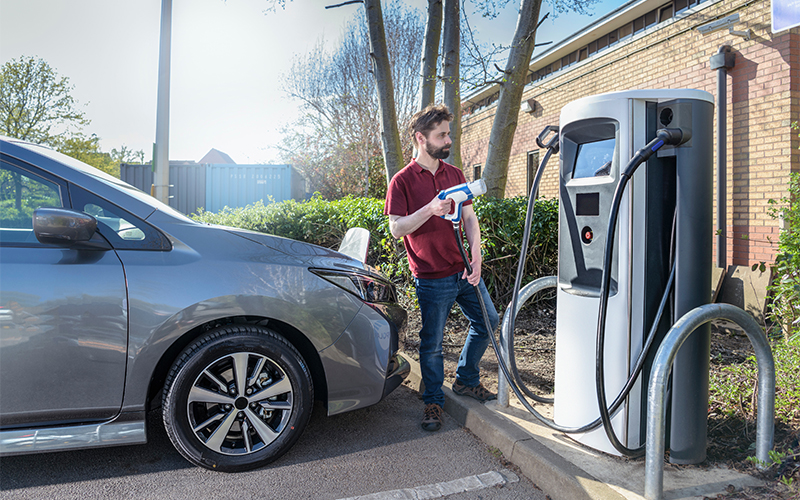Sales and Fulfillment
Battling carbon footprint to combat global warming
In recent years, we have witnessed unprecedented heat waves sweeping across Europe and Asia. While the heatwave in Europe has caused raging wildfires and browning landscapes in the UK and France, temperatures as high as 54°C in Pakistan and India are pushing cities close to the point of being uninhabitable.
So, what is causing the heat wave? High emissions of greenhouse gases cause global warming and thus generate heat waves. Several geological phenomena emit carbon dioxide (CO2) into the atmosphere, consistent with nature’s carbon cycle. But when this carbon cycle shifts from a state of equilibrium, it causes catastrophic consequences. An average 1.5°C temperature rise above pre-industrial levels may result in irreversible changes to the climate, and the COP26 summit has stated an urgent need to reduce carbon footprint.
The impact of high carbon footprint
A scorching planet affects us in ways that we do not immediately understand. Let’s look at its impact on living beings and the economy.
Impact on people and wildlife
- Humans are at a high risk of heat exhaustion and heat stroke. In Europe alone, heatwaves claimed 12,125 lives since June 2022.
- Large-scale wildfires devastate forest cover and plantations and kill animals.
- The reducing green cover results in lowering of groundwater levels and causes draughts, which impact humans and animals alike.
- Extreme temperatures affect cropping patterns, which cause food shortages. A study has reported a drop in the wheat crop production among Indian farmers by 10–50%.
Impact on the economy
- The workforce is likely to be less productive in extreme heat, even if they work indoors.
- High temperatures such as those witnessed in Asia damage the infrastructure, such as melting asphalt roads.
- Businesses have to bear a higher cost of operations. Estimates show that energy consumption rises by 83% due to air conditioning.
- The International Labour Organisation (ILO) estimates that, by 2030, heat waves could reduce global working hours by 2%. This equals 80 million full-time jobs and a cost of $2.4 trillion.
How logistics and supply chain industry increase carbon footprint?
According to a report, the transportation sector accounts for 27% of greenhouse gas emissions, followed by electric power (25%) and industries (24%). The logistics sector includes cars, trucks, ships, planes, and trains, which consume a large amount of energy. Over 90% of fuel used in transportation comes from petroleum products such as gasoline and diesel. Electricity consumption in the transportation sector is comparatively low and limited to railways., but it is increasing with the introduction of electric vehicles.
Ways to reduce the carbon footprint in logistics
To reduce the carbon footprint of the logistics sector, one has to take an end-to-end approach, which includes these aspects:
- Define the metrics and KPIs throughout your supply chain and set your emission targets.
- Use AI, ML, and IoT technologies to get real-time movement of freight vehicles and optimise the best route for lesser fuel consumption.
- Adopt systems to implement the above technologies and proactively monitor the emissions and physical condition of the vehicles.
- Provide the necessary training and monitoring equipment to the drivers for safe and fuel-efficient driving.
- Maintain and service the vehicles at stipulated intervals to minimise wear and tear as well as reduce CO2 emissions.
- Switch to alternate fuels such as hydrogen and biofuels. Use hybrid and electric vehicles to reduce emissions and the cost of running.
- Fully utilise the storage space in shipping containers and ISO tanks.
- Reduce the engine idling time in all vehicles and aircrafts.
However, it is challenging for large logistics companies operating in multiple geographic locations to implement a uniform emissions strategy and run it successfully. This is where the right systems and industry experts can help.
For organisations on the digital transformation journey, agility is key in responding to a rapidly changing technology and business landscape. Now more than ever, it is crucial to deliver and exceed organisational expectations with a robust digital mindset backed by innovation. Enabling businesses to sense, learn, respond, and evolve like living organisms will be imperative for business excellence. A comprehensive yet modular suite of services is doing precisely that. Equipping organisations with intuitive decision-making automatically at scale, actionable insights based on real-time solutions, anytime/anywhere experience, and in-depth data visibility across functions leading to hyper-productivity, Live Enterprise is building connected organisations that are innovating collaboratively for the future.How can Infosys BPM help?
Infosys BPM uses analytics to develop efficient logistics systems and reduce the carbon footprint across the company’s value chain. Enterprises get an end-to-end view of their carbon emissions and get actionable points to reduce costs. The process mapping, domain knowledge, business intelligence, and analytics help companies in:
- Collecting the emissions data from multiple sources
- Enriching the data to form the baseline
- Using analytics to find the root cause and influencing factors for high carbon emissions
- Recommending actions to reduce emissions and increase operational efficiency
Read the full information on how to reduce your company’s carbon footprint.






